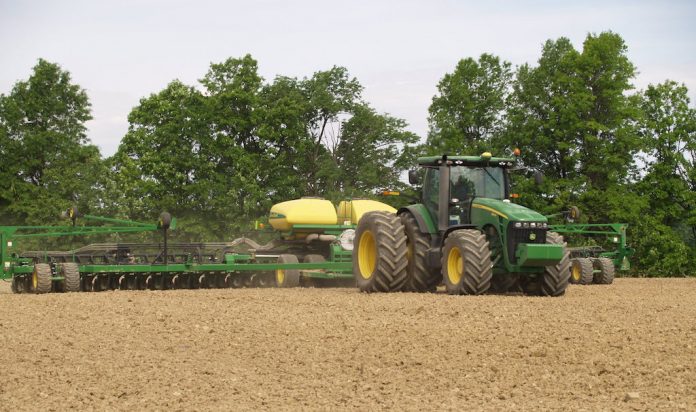With COVID-19 dominating news cycles everywhere on the planet, there are a few questions that have come up for minimizing risk for those who operate farm tractors, trucks, and other enclosed ag equipment — especially when the same machine is being operated over the course of a day or work week by multiple people.
COVID-19 spreads easily from person-to-person. But, it is not believed to be transferred over significant outdoor distances. In fact, health experts still believe that risk is significantly reduced even by people who are together outdoors if they stay more than 6 feet apart.
So, if you are operating a tractor or other vehicle as a sole operator, out in the middle of a farm field and are healthy, you are at near-zero risk from person-to-person spread if you alone.
However, almost all operators come in some contact with visitors, ag service personnel, hired employees and other people.
The virus can be spread by a person infected with the virus who does not appear or “know” they are sick — or they may have acquired the virus but not yet show symptoms. This is what health professionals are calling “asymptomatic” individuals.
During this time when many people are staying home and working in isolated locations, it’s good if you are a grower or other ag professional to limit contact with others by transacting as much business as possible by telephone/text messaging/email; limiting contact with visitors; and if you must spend time in direct contact with nonfamily members, keeping a 6-foot distance.
The other possible situation that could lead to exposure is sharing a cab (on a tractor or other machine) when things get busy — or when you have employees or others who might be trading off and using the same machine as you or other operators.
Here are some things you can you to reduce the level of risk that exists by sharing equipment:
- Know the symptoms of COVID-19 and do not allow workers onto the farm if they are sick or have known exposures to and contact with others (including family members) who have had the virus over the last 14-plus days.
- Every operator should start each workday/shift with clean and laundered clothing — normal machine washing with laundry detergent and heated drying will kill the virus. Warm or hot water is better.
- Between operators — if possible, leave cab windows/doors as open as possible (as long as the machine is parked in a secure location). Wind blowing through the cab will help clear and clean the air in the cab.
- Direct exposure to the UV light in bright sunshine will also be helpful, though it will not impact virus particles in shaded areas or if sunlight is shining through glass.
- Consider more frequent cab air filter changeouts — most air handling systems are bringing in and filtering outside air. While there are no known concerns about these filters spreading virus, air movement in the cab during operation is important and a clean filter will help insure maximum airflow and comfort for the operator.
- While hand sanitizers and gloves do help by killing or reducing contact with the virus, nothing beats handwashing. Wash with soap, warm water, and scrub hands thoroughly for at least 20 seconds.










